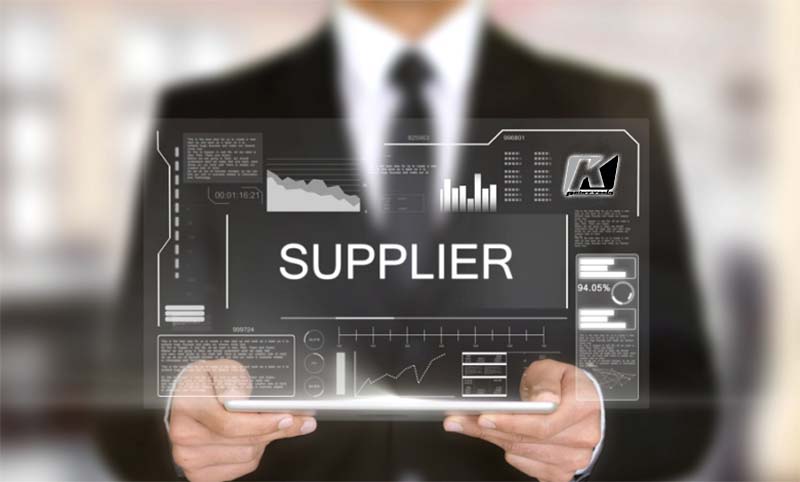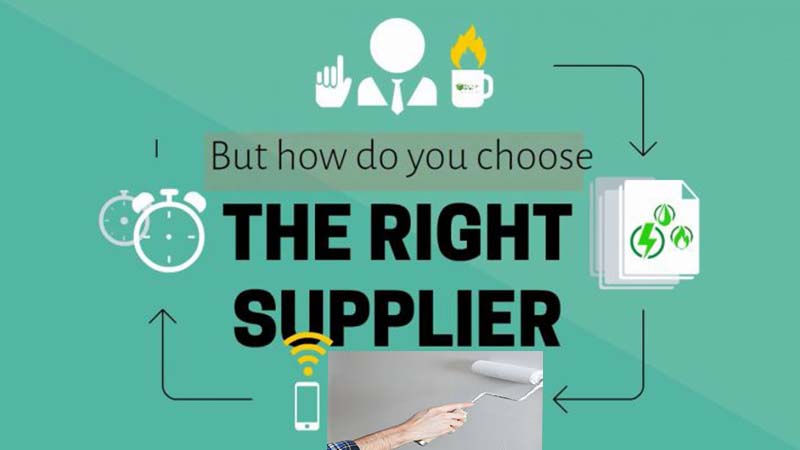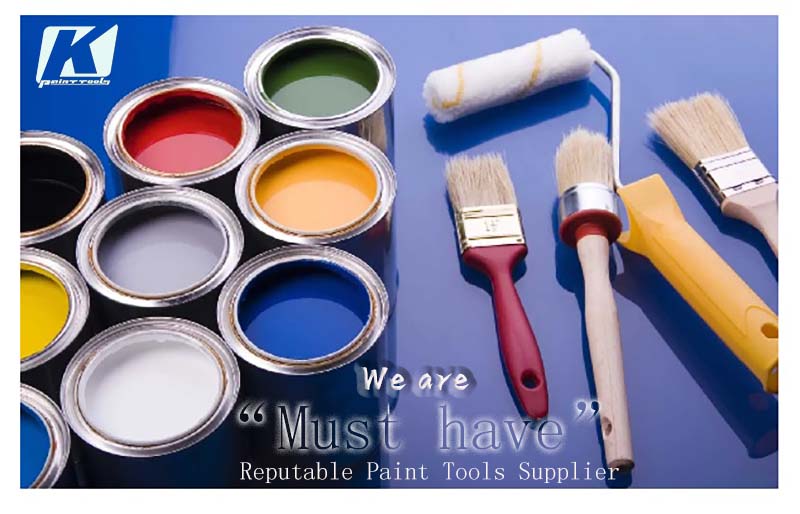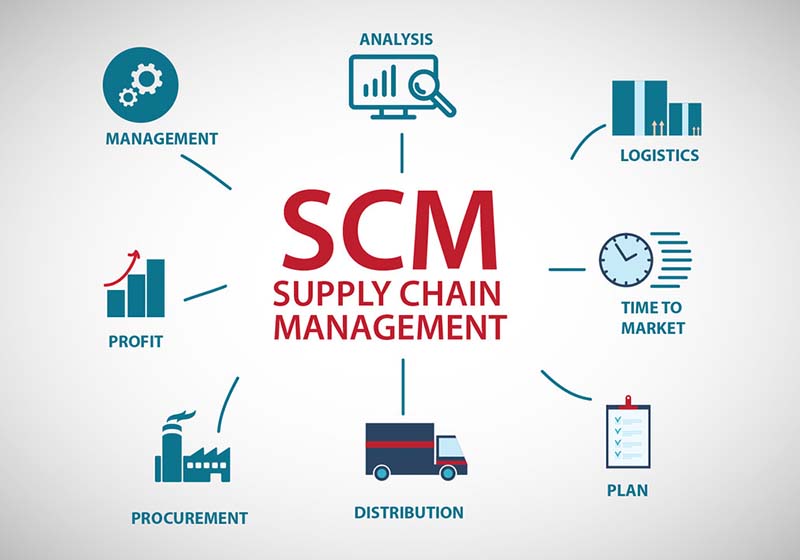How To Choose The Right Paint Tools Supplier For Your Business

How To Choose The Right Paint Tools Supplier For Your Business?
That is common knowledge that the better the Supply Chain Management, the better the produced paint tools will be. Where the quality, and indeed, safety, of your paint tool relies on an excellent paint tools supply chain, finding a reputable paint tools supplier can be a daunting task.
Many businesses will prioritise the bottom line, and understandably, obtaining a good price is important, but maintaining a good relationship with your supplier can be cost effective too. So how then do you ensure that the business supplying you is paying the same level of care and diligence to their goods, their role in the supply chain, and in their relationship with you, as you are?
There are many key factors that you need to consider when choosing the right paint tools supplier, such as how to guarantee the quality, safety and value of the paint tools, as well as understanding what processes they have in place for if things go wrong.
This article will include what a reputable paint tools supplier is and how to find one. We will also discuss what factors to consider when choosing your suppliers, give an overview of the supplier selection process, and explain how you can establish a good relationship with your chosen reputable paint tool supplier.

Choosing the right paint tools supplier may be one of the hardest decisions a procurement department has to make and 31% of procurers stated this as the hardest part of their job. The right supplier means that your products and services are delivered on time, that you are receiving the optimal price to meet your needs and that the quality is in compliance with your standards - making a mistake when choosing a supplier can affect the satisfaction of your deliverables to your customers and the company reputation.
Know what is it that you need and spend the time to research the offer always keeping in mind how important the supplier is for your business. The potential supplier should be able to exceed your expectations. Imagine that your business suddenly starts expanding and demand for your services and products are higher. Are your suppliers of choice ready to meet your new challenges?
Think not only what you need in the next few months but long term. If your goal is to provide your customers with faster deliveries in the following year, you should make sure that your supplier is ready and able to meet this need when the time comes.Do you really have the time to source products and best suppliers or would you rather use your resources to focus on your core activities?
No matter which firms you choose to work with make sure each firm passes your standards of reliability, trustworthiness, efficiency and low cost. Your business should be their highest priority -your needs from a supplier depend on your industry, type and size of your business. Monitoring the supplier performance is necessary. Establish a direct contact point with your company and conduct regular performance reviews which will be of great help when it’s time to renew the contract.
However, regardless of the field you operate in, there are some basic requirements suppliers must fulfill:
1. Reliability – This is the sole most important obligation of a supplier. You have to get what you need, in the quantity and quality that you need and when you need it.
2. Quality – The quality of a product or a service needs to be consistent.
3. Price – Lowest price is not always the most important criteria. You should always search for value and decide on the best balance between price and value.
4. Clear communication – A good supplier needs to be honest and forthright and let you know of unforeseen delays so you have time to make adjustments.
5. Customer service - Having a dedicated manager at your disposal that can solve any issue is invaluable.
6. Financial security – One of the important requirements of every supplier is financial strength and stability so they can meet all your requirements.
7. Partnership – Approach your supplier as a partner in business. Strong relationships mean that they will always have your best interest in mind and do whatever is in their power to provide you with what you need.
What is a Reputable Paint Tools Supplier?
A reputable supplier is a business that supplies you with ingredients (raw or processed), finished products, goods or services. Within the paint tools supply chain, a reputable paint tool supplier is one who adheres to high levels of paint tools manufacturing and safety production standards at all times, whilst continually improving their processes and sharing information with you, the purchaser or the paint tools buyer.

We are"must have" reputable paint tools supplier
Most people in the paint industry will have come across the term ‘Reputable Supplier’ when setting up their paint tools safety management system. Part of your due diligence for a paint tools produce management system and their supply chain management requires that you have carried out documented checks on your suppliers to ensure that the paint tool you purchase is safe to use in your business. Doing your due diligence and having a good relationship with your suppliers is essential for the transfer of information that is necessary to keep your product, your customers, and your business, safe.
The task of deciding upon a supplier usually comes from the person responsible for sourcing the required product. This can be the business owner or manager, the purchasing or procurement departments, or anyone else who can recommend a good supplier! The key to making a good decision is to do your research thoroughly.
How to Find a Good Paint Tools Supplier
Finding a good paint tools supplier can be a difficult task, but chances are you already know of some, or you know someone who can give you some recommendations. If you are completely new to this, don’t be afraid to call up potential suppliers and explain what you’re looking for.
Some other good places to seek advice are:
1. Networking events – these are a great place to meet potential suppliers. Many industry bodies, and even your local council, will organise events throughout the year where you can attend and make good connections.
2. Specific industry experts – there are many consultancy businesses that specialise in particular products and markets and their knowledge could be invaluable to your business.
Any business that is involved in the supply of paint tool should be committed to Safe production and on-time delivery, and that includes assessing the threats and vulnerabilities in the whole supply chain. As such, when looking to discover if the supplier you have in mind is reputable, a good place to start is with some basic research.
A reputable supplier should have a history of supplying acceptable products, and value-added service. Your research can help you assess this – consider asking how long have they been in business, what certification have they gained, what customer reviews and partnerships do they have, are they financially stable, and what are their past audit results?
A reputable supplier will meet industry standards and regulatory requirements, and should supply this information upon request. You should also look for a company mission statement, which should be on their website, and check to see if the business demonstrates a commitment to food safety.
Choosing the right supplier for your business is crucial when it comes to satisfying your customers and consistently providing them with the best products and services. Once you have completed your initial research, you need to drill down deeper into the company. We will look at what further factors to consider in the next section of the article.
What Factors Should be Considered When Choosing Paint Tool Suppliers?
That is important to use reputable suppliers that you can trust to handle and supply paint tools. This means trusting them to provide products that match standards, with accurate labelling and traceable documentation, that have been handled safely throughout the supply chain, that are of an acceptable quality and price, and that arrive on time and at the agreed price.
A reputable supplier will also have a robust procedure in place in the event of a product recall or withdrawal, and be consistently horizon scanning and working on adapting to any upcoming issues. All of this information should be shared with you. As you can see, there is quite a lot of work that goes into sourcing a reputable supplier!
There’s no doubt that the selection process can be time-consuming, so it can help to familiarise yourself with the qualities of a reputable supplier, as well as the key factors you should be looking to consider. To help you establish a good relationship with your supplier, be sure to ask them the following key questions:
1: Are they registered with the local authority?
In China, a reputable supplier will be registered with their local authority.
2: Do they demonstrate regulatory compliance?
Everyone involved in a paint tools supply chain must provide a complete picture of a product’s history that’s consistent and comprehensive. Traceability also works as a risk management tool that paint tool buyers should use to react to a paint tools safety issue.
3: Do they have any certification or quality assurance?
Evidence of external certification, auditing to external standards, or of quality assurance, is a good indication of a reputable supplier. Remember you can cross reference their claims with the certification provider to be doubly sure.
4: Are they financially stable?
A supplier that goes out of business at short notice can leave you really stuck, or scurrying around to source product from elsewhere, often at inflated prices.
5: Do they provide fully referenced invoices or receipts?
A business which is transparent with invoices and receipts is another good sign of a reputable supplier as they can be traced through the banking system, making it easier for you to keep track of your own accounts.
6: What is their customer service like?
This will be important to you when dealing with the supplier in future. Make sure their customer service works to your needs.
7: Does the supplier provide accurate information?
Accurate information is essential in keeping your customers safe, and any reputable supplier will understand this and should be able to provide information for every product they sell. A supplier that has taken the time to provide easily accessible product specifications demonstrates a willingness to be as helpful as possible to win and maintain your business.
You can also ask your other trusted suppliers for their recommendations, and look to see which trusted businesses have partnered with your potential supplier. A declaration of trust from a well known business is an excellent green flag that your supplier is meeting rigorous standards.
Remember, you are required by law to take reasonable precautions and do all that is needed to protect your customers, and therefore you must choose your suppliers carefully. Alongside considering logistics and that goods are handled safely, you should also think about the supplier’s equipment and packaging, and what steps are in place to mitigate the risk of paint tools being delivered to your business. When performing checks on your supplier, considering their equipment is equally important in the process.
What should I document for due diligence?
As you are assessing your suppliers’ reputability, you will naturally compile ‘evidence’ of each suppliers’ procedures. Each of the factors and key questions mentioned above will give you valuable insight as to whether the supplier is someone you want to work with or not. It is recommended that you keep this information on file for each supplier you assess, along with notes of your thoughts of their suitability to your business. This will demonstrate evidence of your due diligence, should you ever need to provide it.
As part of your paint tools safety purchase management system, you should also have a record of all the suppliers you use, their contact details, and the terms of your agreement. Additionally, it is good practice to regularly run an audit on your suppliers and your arrangement with them to ensure that it remains fit for purpose. You should regularly check that they are upholding standards, and that new procedures are documented and effective. Any information discovered through horizon scanning should also be shared as well as new processes, such as increased cyber security protocols.
Now that you have a better understanding of what factors to consider when looking for a reputable supplier, that will help to get the ball rolling on your journey to finding the right reputable supplier for you and your business. Once you have identified your reputable supplier and carried out your checks, the next step is beginning the supplier selection process.
The supplier selection process is the procedure that companies go through to identify, evaluate, and form contracts with suppliers. It can be quite time consuming, and take up a large amount of resources – both financial and time. Taking precautions here can help you not fall victim to food fraud. Yet once you have done the leg work and have a contract in place that all parties are happy with, the working relationship can flourish and the long term benefits will play a crucial role for the success of any organisation.
Key criteria to first consider in your selection process includes understanding supplier characteristics. What are the important strategic alignment factors that you value? Outlining your values at the start of the process will help you get on the same page and identify any potential issues. Consider also if there are any constraints to the process – such as management directives, government regulations, contracts already in place and other commitments. Think about where the supplier is based as that may have an impact on your arrangement.
Once you are happy your reputable supplier is a good fit for your company, and vice versa, it is down to negotiating your terms and creating a contract that you are both happy with. It is important to get this stage right so that when you start working together you can focus on the future and on progressing and maintaining a good relationship.
G.SB PAINT TOOLS CO.,LTDis manufacturer of quality paint tools, such as paint rollers, paint brushes...ect. Established in 2003, the company, in a short span of time has established its name as a provider of High-quality paint tools in China. Our team of competent and knowledgeable staff, are continually adding to our range as we identify quality products to meet the ever evolving demands of our customers.
With our industry expertise and vendor partnership, we have a strong supply chain that we have built up through which we are able to offer very competitive pricing on high quality products. We assure delivery of the best quality products which are made using superior Industrial Grade Quality Materials.
The role of a company is not only to grow and diversify responsibly, but also to recognize and support the needs of the community it serves. We are committed to contribute to our society in any way we can. We take pride in our employees, who continually impress through their determination, curiosity and creativity, driven by a hunger to learn and get better each day. Apart from the jobs we create and the economy we support, we also fund and participate in a range of China social, and charitable activities.
To be recognized as one of the leading paint tools supplier based on quality of products, excellence of service, creative ideas translating to innovative products, and commitments to the customers. We strive to provide you the best quality, most accurate, cost-effective, robust and reliable paint tools solutions based on the latest technology that would give you the confidence to meet the growing demands of your business and be the pioneer of your industry.

What is Supply Chain Management?
Supply is providing goods and services to the final users when these are required and afforded by them with an acceptable quality, competitive price, at an accessible location.
To achieve these objectives of supplying, the businesses have to perform several interconnected steps in a particular order. All these interrelated operations create a chain of actions to fulfill the objective of supply that is providing goods and services to the end users. For this reason we called it Supply Chain, in other words, this is a chain which matches the supply according to the demand of goods and services, and managing all these steps in an efficient and effective way is called Supply Chain Management.
Now let’s define a formal definition of Supply Chain Management, it is the process of managing the movement of goods and services to end users from suppliers in shape of raw material to finished goods in a very efficient and effective way. These all chained activities are glued by information technology and wheeled by money.
Another simple way to explain the SCM is through Fish Bone Model,Fish Model in Supply Chain is Bringing scattered Resources together from Suppliers to our facilities which is the tail of the Fish… which help us to swim for this suppliers and supply are very vital ingredient of the chain otherwise whole model could be collapsed …then next step or phase is transformation of these resources through Operations into product or service those are required by our customers , this part is the main body of the fish and then send these product and services to the segment of our customers which the nose of the fish
The main ingredients of supply chain are location, production, inventory, transportation, and glued by information and greased by cash which are sometimes called cross- functional ingredients of supply chain.
There are various functions in supply chain management, here some of the main functions of Supply chain management are, Sourcing, Negotiating, Contracting, purchasing, transportation, logistics, product designing and development, production, controlling inventory, warehousing, and distribution and customers relationships.
These are the functions every business does, for this reason some time, we called SCM is equal to business and no doubt businesses are doing all these functions since centuries, the only difference is that now these activities are done in a collaborative and coordinated way in the total chain which includes not only the business itself but other organizations related to the business, like suppliers, suppliers’ suppliers, which are called upstream and distributors, retailers and customers, which are called downstream.
For managing Supply Chain more effectively, Supply Chain Managers usually divide the Supply Chain into three operational areas, one is upstream which includes sourcing, purchasing and procurement, negotiating, ordering and inbound transportation and logistics, and collectively it is covered under Suppliers Relationship Management (SRM), the second one in the downstream which includes setting up distribution network, order fulfillment, and out bound transportation and logistics, and this comes under the Customers Relationship management (CRM), and the last one middle stream , which is inside of the organization which deals with receiving, warehousing, material management, manufacturing scheduling, product development and designing.
All these three streams are connecting through information technology, which creates a clarity and visibility in the supply chain from one end to another end. Presently many businesses use Supply Chain as a strategy to have the competitive advantage over their competitors, this is due to cut throat competition, businesses are becoming more and more customers or market oriented instead of production oriented, and so supply chain strategy is the only vehicle suited to satisfy the customers by providing best quality and quick response.
Five Steps to Supplier Selection
Step one – Supplier Selection Scorecard
The first step in the supplier selection process is to create a supplier selection scorecard.
The supplier selection scorecard contains all the important elements you require in a supplier. It has long been stated, “That which does not get measured, does not get done”.
Your scorecard should be quantifiable and include:
Supplier characteristics
The important strategic alignment factors you value
Applicable business policies
Any constraints – management directives, government regulations, contracts already in place, and other commitments
At this step, make sure you are prioritizing your needs. All of the above may be important but some are more important than others.
For example, quality may be most important. Surprising to some, cost is often a low priority. Think about it…if a supplier offers poor quality, long lead time, late deliveries, etc. Does it really matter how low the price is? It simply won’t do!
Step two – Identify Suitable Suppliers
Once you have the selection criteria in place, you must create the pool from which you will select a supplier. During this part of the process, you will want to consider:
Current suppliers – Starting with suppliers you have experience with and established relationships is generally a good idea
Past suppliers – Depending upon the reasons why they are ‘past’ and not ‘current’
Competitors – You may be in a position to buy from a competitor if it is ethical and low-risk
Industry groups – many of which are non-profit and maintain data bases of member companies
Recommendations and prior business relationships – perhaps created while working at other companies
Internet – which offers myriad opportunities to find, research, and contact potential suppliers
Step three – Scorecard Ranking
Next, gather information from the identified suitable suppliers – perhaps in the form of a Request for Quote (RFQ) or Request for Proposal (RFP).
Tabulate the information you collect and use the scorecard to rank the potential suppliers.
Depending upon the complexity and/or criticality of the product or service, you may:
Select the highest ranking supplier – Recognize that while you are not required to pick the top scorer, moving too far down the list is a red flag, indicating the process was flawed
Choose more than one for further qualification – May include interviews, site visits, etc.
If all that work did not identify a clear winner, you may need to review your criteria and/or expand your search.
Step four – Negotiate
After you have narrowed the list to a manageable number of best options, possibly just one, let the negotiations begin!
Depending on the critical good or service, you may negotiate with just the top supplier on your scorecard, even if others remain on the list of potentials.
These others, of course, are not told they are not #1 until after you have completed negotiations and agreements are completed.
Based upon the complexity of the situation, lawyers may be involved.
Step five– Create Contract
Once an agreement is reached, a contract is created and signed.
For many transactions, the purchase order is the contract. For complex situations, you may have a contract and then create a separate purchase order.
Creating the purchase order will include activating your procurement system. This should be a standard operating procedure and include getting your accounts payable process ready to process the supplier invoice















